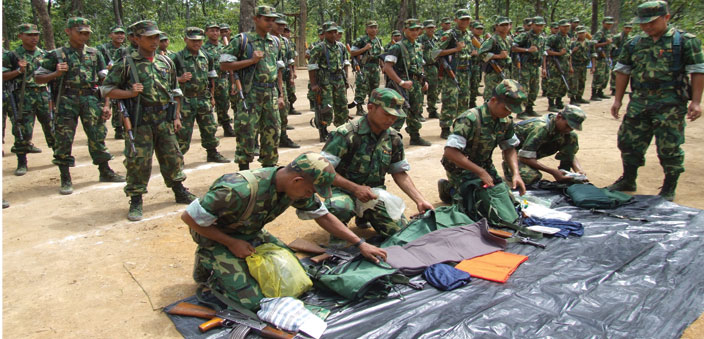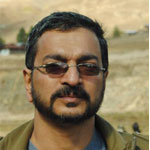It is strange but true that very few regions in the world have given birth to as many insurgent outfits as India’s Northeast, a frontier zone sandwiched between China, Bhutan, Myanmar and Bangladesh. There had been ample indications even before Independence that this region would be a hotspot of conflict. In the mid-1950s, the Naga National Council (NNC) led by the venerable Angami Zapu Phizo raised the banner of revolt with a series of offensives against the security forces. The government responded by imposing draconian laws and dispatching more troops to the border state to quell the rebellion. But within a few years, the fire began to spread to other states of the Northeast, with more outfits demanding independence from India. By the mid-1990s, Sikkim was the only exception in the region that did not witness the birth of a rebel group, although tensions in the state had been simmering between migrant Nepalese and the indigenous Lepchas and Bhutias.
Reasons for the insurgency
According to some estimates, there were more than a hundred insurgent outfits in the Northeast in the early 2000s, with diverse goals and objectives, ranging from secession to banditry. An interplay of several factors contributed to this state of affairs – unemployment, misgovernance, draconian laws like the Armed Forces Special Powers Act and support of foreign governments. Resorting to violence came to be viewed as a justifiable means to redress grievances by some sections of the populace. The government continued with the conventional two-pronged policy of keeping the door open for a negotiated settlement with all the groups and military operations. Over the past several years, many militant organisations across the region have accepted the olive-branch, signed ceasefire agreements, and have initiated talks with the government. But there are outfits who have continued with the battle from camps located deep in the jungles of Myanmar.
Nonetheless, there has been a sharp drop in insurgency related incidents in the Northeast in the past decade or so. In 2013, the Centre informed Parliament that there were 54 militant outfits active in the Northeast, of a total of 66 in the entire country. Out of these, Manipur has the dubious distinction of having the maximum number at 35, followed by Assam at 11, and Nagaland with four groups. Meghalaya and Tripura have two each, while even Mizoram which is considered an oasis of peace in the troubled region, has one outfit that is active. The statement did not include the CPI (Maoist) and smaller groups that are also known to be active in the region. Based on the nature of their activities and objectives, all these groups can broadly be divided into five categories:
Lure of sovereignty
As many as nine big and small groups from Assam, Manipur and Nagaland that have set up base in Myanmar’s Sagaing Division are demanding independence of the Northeast, and the contiguous Naga inhabited region across the border. These include the two anti-talks factions from Assam – the United Liberation Front of Asom (ULFA) and the National Democratic Front of Bodoland (NDFB), Kamatapur Liberation Organisation and six groups from Manipur. They are being sheltered and assisted by the Khaplang group of the National Socialist Council of Nagaland headed by the Naga rebel chief S.S. Khaplang.
Emboldened that no harm would be done to the camps and training facilities, three rebel groups from the Northeast have joined hands with NSCN(K) to form a coalition called the United National Liberation Front of Western South East Asia (UNLFW) on 17 April 2015. The six Manipuri outfits, which had constituted the Coordination Committee (CorCom) five years ago in Myanmar, have not yet joined the alliance, but have offered “moral support”. This correspondent observed an intimate relationship and inter-dependence among all these groups during a covert visit to a rebel base in Myanmar towards the end of 2011. Explaining the rationale behind the alliance, ULFA chief of staff Paresh Baruah said that the objective would be to give a “greater punch” to the campaign of independence of the Northeast and Naga inhabited area in Myanmar, and drum up support at the global level.
Case for autonomy
The demand of independence notwithstanding, most of the armed groups in the Northeast are exploring the possibility of a negotiated settlement with the government. The separatist movement in Nagaland took a sharp turn in 1997 when the Isak-Muivah faction of the NSCN that had been campaigning for the independence of Nagaland, signed a ceasefire agreement with the Indian government. Initially, the government was confident about an early solution, but the issues raised by the Nagas were sensitive and tricky that raised opposition from other states in the Northeast. Besides NSCN (IM), the Centre has also been exploring options of a negotiated settlement with the pro-talks factions of ULFA and NDFB, five Adivasi (tea tribes) outfits in Assam, and more than 20 organisations in Manipur belonging to the Chin-Kuki-Mizo ethnic communities. Progress of talks has however been tardy, and the top functionaries of these groups have often complained of insincerity on the part of the government.
Rise of Muslim Fundamentalist Organisations
Reports about the growth of Muslim Fundamentalist Organisations (MFOs) in the Northeast have occasionally surfaced in the media for the past several decades. On 6 April 2000, Assam chief minister Prafulla Kumar Mahanta tabled a statement in the assembly titled “ISI Activities In Assam”, which explained that the Pakistani intelligence agency had embarked on a strategy to assist local militant outfits, create new outfits along communal lines, supply explosives and weapons, indulge in sabotage, promote fundamentalism among local Muslim youth and communal tension between Hindus and Muslims. As many as 120 militants belonging to MFOs have surrendered in Assam and Manipur between1999-2004. During the same period, 363 miliants have been apprehended including cadres from the Muslim United Liberation Tigers of Assam, Harkat-ul-Mujahideen and People’s United Liberation Front. Ostensibly, the ISI stands to benefit by sponsoring these organisations. MFOs could be used to further Islamisation of the region, facilitate the demographic invasion that is currently underway in the Northeast with the uncontrolled illegal infiltration from Bangladesh, and to carve out a Brihot Bangladesh by incorporating areas of Muslim majority with Bangladesh.
Appeal of Mao
A connection with the Northeast was deemed essential by the Maoist rebels for two reasons. First, it could be a source of weapons and explosives, and secondly, it could provide allies for spread of the movement in the region. Efforts by the People’s War Group (PWG) bore fruit when it was invited to attend the Raising Day celebration of ULFA at a camp in southern Bhutan in 1995. The links were maintained, but could not be alleviated to a higher level due to ideological differences. ULFA did not want to engage in a class struggle as it would have diverted the attention from the immediate goal of securing Assam’s independence.
CPI(Maoist)’s setback in Assam was counter balanced by an alliance in Manipur in 2008 with the People’s Liberation Army (PLA). Investigation by the National Investigation Agency (NIA) revealed that the twin organisations have resolved to assist each other in terms of weapons and training. It managed to recruit some cadres who were assigned the task of carving out a base in Sadiya in Assam, bordering Arunachal Pradesh. However, this formation was dismantled within months and police gunned down four functionaries who had been active in the region. Subsequently, a report compiled by Assam Police said that the CPI (Maoist) has adopted a new strategy to strengthen its base in Assam. Instead of following the model that was applied in Chhattisgarh and Jharkhand, it has decided to follow in the footsteps of the People’s Liberation Army (PLA), which means that emphasis would be on indoctrination rather than arming the cadres.
Guns for money
The fifth category of militants in the Northeast are swayed neither by ideology nor commitment to achieve any particular goal. They are a ragtag group of people whose only objective is to earn a living with the power of the gun. An assessment of the profiles of these outfits point to different factors behind their emergence mainly in Assam, Manipur and Meghalaya. While some have newly emerged, others are breakaway factions of larger groups like Manipur’s Kangleipak Communist Party (KCP). At times, it is also operationally beneficial for bigger groups to float tiny squads and keep them alive for ferrying weapons, extortion and gathering information. In some areas like the twin hill districts of Dima Hasao and Karbi Anglong in Assam and Meghalaya’s Garo Hills, insurgent groups have been fizzling out, but not insurgency. Whenever an accord is inked by the government with an outfit, a section among them have always opposed and gone back to the jungles to continue the movement.
A roadmap for the Government


 [/column]
[/column]